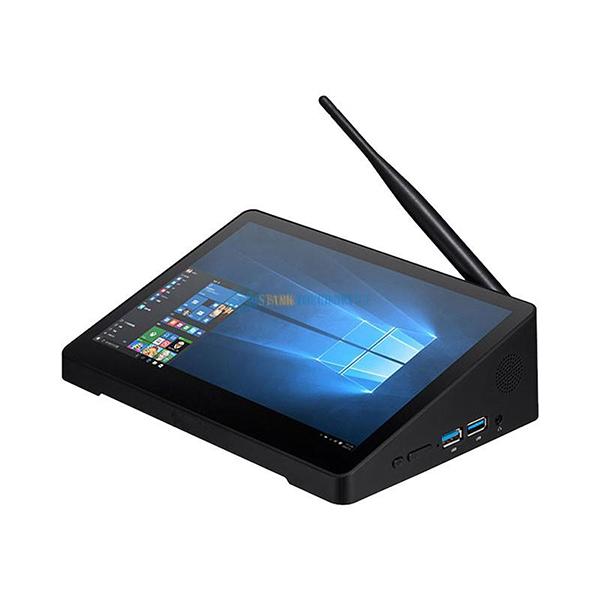Welcome STARK TOUCH DEVICE!
Solutions
Cleaning and maintenance tips for industrial control computer expansion cards
Cleaning and Maintenance Techniques for Expansion Cards in Industrial Control Computers
Industrial control computers (ICCs) rely on expansion cards—such as communication interfaces, data acquisition modules, or specialized controllers—to perform critical tasks. Dust, debris, and environmental contaminants can degrade card performance or cause failures. Proper cleaning and maintenance ensure reliability and extend the lifespan of these components.

Identifying Common Contaminants and Risks
Expansion cards in ICCs are exposed to unique environmental challenges that require targeted cleaning approaches.
Types of Contaminants
Dust and Particulate Matter: Fine dust from industrial environments can accumulate on card surfaces, obstructing airflow and causing overheating.
Metal Shavings: Machining or manufacturing processes may generate conductive debris that risks short-circuiting card components.
Oil and Grease: Lubricants or coolants used in nearby machinery can adhere to cards, trapping dirt and corroding contacts over time.
Humidity and Condensation: High-moisture environments may lead to oxidation on connectors or traces, disrupting electrical signals.
Risks of Neglect
Thermal Throttling: Dust buildup on heatsinks or fans forces cards to operate at higher temperatures, reducing performance.
Intermittent Failures: Corroded or dirty contacts can cause erratic behavior in communication or data processing.
Permanent Damage: Conductive debris or moisture may create electrical shorts, destroying sensitive components.
Pre-Cleaning Preparation and Safety Measures
Proper preparation minimizes risks to both personnel and equipment during maintenance.
Powering Down and Isolation
Shutdown Protocol: Power off the ICC and disconnect it from all power sources. Wait for capacitors to discharge to avoid electric shock.
Static Discharge: Use an antistatic wrist strap or mat to prevent electrostatic discharge (ESD), which can damage integrated circuits.
Workspace Setup: Clean a dedicated workspace free of loose fibers or conductive materials. Lay down antistatic mats for card placement.
Tools and Materials
Compressed Air: Use canned air or an air compressor with a moisture filter to blow away loose debris without physical contact.
Soft Brushes: Natural-bristle brushes (e.g., makeup brushes) gently dislodge dust from crevices and connectors.
Isopropyl Alcohol: 90% or higher concentration alcohol dissolves oils and evaporates quickly without leaving residue.
Lint-Free Cloths: Microfiber or coffee filters wipe surfaces without shedding fibers.
Documentation and Labeling
Card Identification: Label each card with its slot number or function before removal to ensure correct reinstallation.
Photographic Records: Take photos of card orientations and connections to reference during reassembly.
Maintenance Logs: Record cleaning dates, observations, and any issues encountered for future reference.
Step-by-Step Cleaning Process
Follow these steps to clean expansion cards safely and effectively.
External Surface Cleaning
Initial Dust Removal: Hold the card vertically and use short bursts of compressed air to blow dust away from connectors and components.
Brushing: Gently brush the card’s surface, focusing on heatsinks, fan blades, and edges where dust collects.
Alcohol Wipe-Down: Dampen a lint-free cloth with isopropyl alcohol and wipe the card’s non-electronic surfaces (e.g., plastic housings). Avoid dripping alcohol onto circuits.
Connector and Contact Cleaning
Edge Connector Inspection: Examine the gold-plated contacts on the card’s edge for tarnish or debris.
Contact Cleaning: Moisten a cotton swab with alcohol and gently rub the contacts in a single direction to remove oxidation.
Drying: Allow contacts to air-dry completely before reinserting the card.
Fan and Heatsink Maintenance
Fan Cleaning: Use compressed air to blow dust out of fan blades and vents. Hold blades stationary if possible to prevent damage.
Heatsink Inspection: Check for clogged fins and use a soft brush to dislodge blockages.
Thermal Paste Check: If the card includes a processor with thermal paste, inspect for dryness or cracking. Reapply paste only if recommended by the manufacturer.
Post-Cleaning Verification and Reinstallation
After cleaning, verify functionality and reinstall cards correctly to avoid issues.
Functional Testing
Visual Inspection: Confirm no liquid pools or loose debris remain on the card.
Power-On Test: Reinstall the card and power on the ICC. Monitor system logs for errors related to the cleaned card.
Performance Benchmarks: Run diagnostic tools to ensure the card operates at expected speeds and temperatures.
Reinstallation Best Practices
Alignment: Insert cards straight into slots to avoid bending pins or damaging connectors.
Secure Fastening: Tighten any screws or latches holding the card in place, but avoid over-tightening plastic brackets.
Cable Management: Reconnect all cables, ensuring they are routed away from fans or moving parts to prevent future contamination.
Ongoing Monitoring
Temperature Checks: Use ICC monitoring software to track card temperatures post-cleaning. Sudden spikes may indicate incomplete cleaning.
Scheduled Reviews: Incorporate card cleaning into routine ICC maintenance cycles (e.g., quarterly or biannually) based on environmental conditions.
Issue Escalation: If a card exhibits persistent errors after cleaning, consult technical documentation or escalate to a specialist.
By adhering to these techniques, industrial facilities can maintain the performance and reliability of expansion cards in ICCs, reducing downtime and extending hardware longevity.


